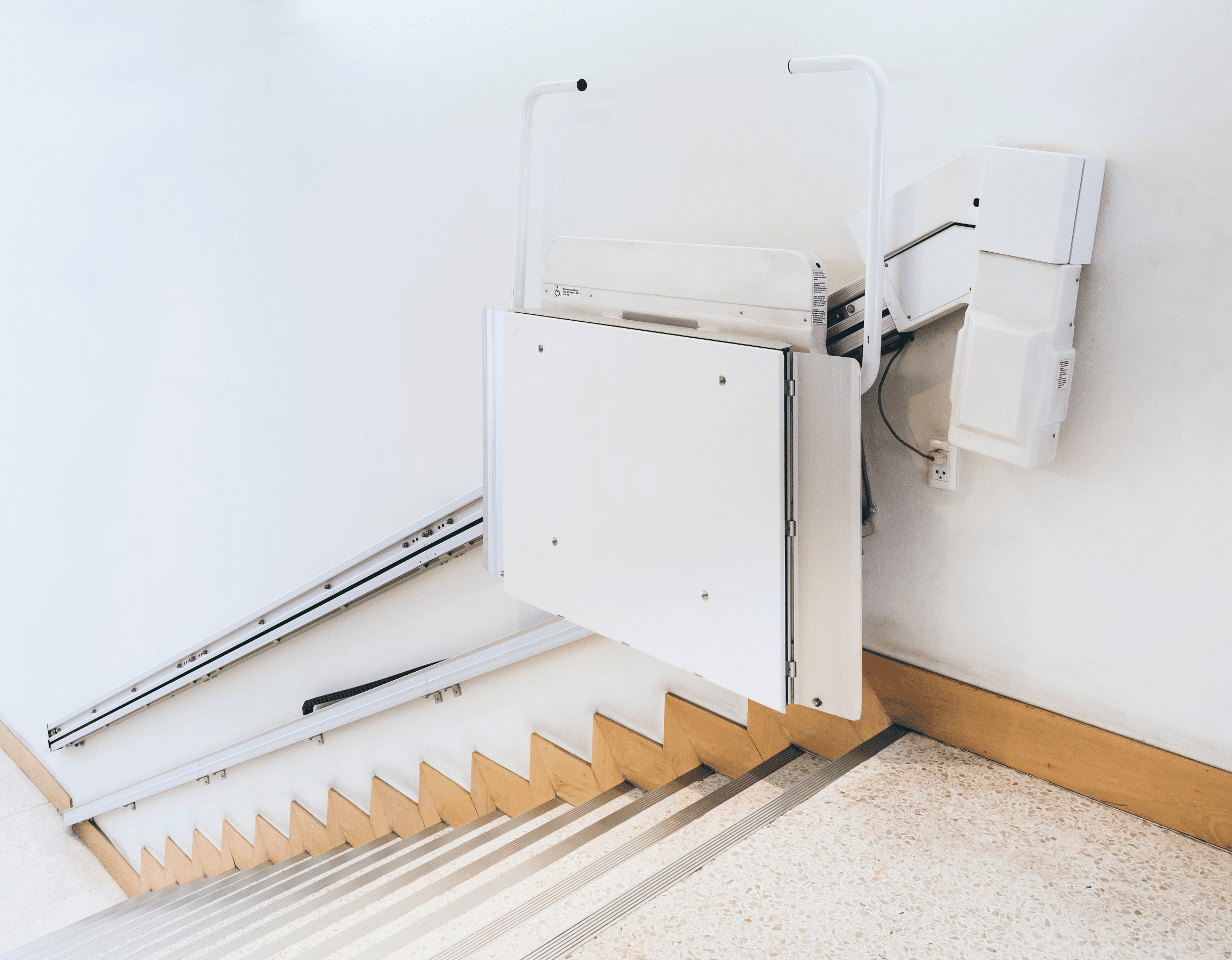
When installing a stairlift in your home, it’s incredibly important that the stairlift be selected and designed to perfectly fit your staircase’s configuration. Regardless of the size or shape of your staircase, your stairlift needs to be able to safely navigate the space between the floors of your home so that you can use the device with total peace of mind. But to select the right stairlift for your staircase, it’s important that you understand the differences between the different types that are available. Keep reading to learn more about the differences between straight and curved stairlifts for sale.
Straight stairlifts are designed to fit staircases that run in a straight line without any bends or curves. This is a common staircase configuration, primarily because it’s an easy staircase to design and install. Similarly, the stairlifts made to fit these staircases are also simple. They feature a straight rail that is installed along the staircase, and the lift travels smoothly along the incline without any changes in direction. The simplicity in their design makes straight stairlifts cost-effective and easy to install.
Curved stairlifts—and curved staircases, for that matter—are more complex. The stairlift must be custom-built to fit the staircase. This ensures that the rail is specifically tailored to the unique shape and curvature of your staircase, and ensures a smooth and safe ride along the entire length of the stairs. If the curvature on the stairlift differs even slightly from the curvature of the staircase, the rail will not fit as it should. Due to their custom nature, curved stairlifts require more time and expertise to install, often resulting in higher costs.
As mentioned above, curve stairlifts are custom made to fit your staircase so, naturally, installation is going to be a bit trickier. Straight stairlifts have a standardized design and quicker installation process, which contributes to a lower overall cost for this type of lift. The rail is mounted to the stairs themselves, not to the wall, and runs in a straight line up the steps. This generally doesn’t require drastic modification of the staircase or any adjustments aside from possibly removing an existing handrail.
Curved stairlifts have a lengthier installation process, which can significantly add to the lift’s cost. The stairlift’s track, though still mounted to the steps, often needs to be installed in more pieces since the entire rail is custom designed to fit your space. Sometimes, adjustment and modification may be needed to help the stairlift navigate narrow parts of the staircase or any tight turns. This means the installation will take more time, so you can expect your home to be a construction area for a while longer than with a straight lift.

While straight stairlifts have a standard construction, that doesn’t mean that they can’t be customized. The rail will still be fitted to the length of your staircase, and you’ll still have many customization options to choose from, including extended rails for safer entry and exit on the stairlift, material choices for the seat, folding seats, added footrests, and more. Even though a straight stairlift doesn’t need to be custom made to fit your staircase, you can still customize the lift itself to meet your needs and desires.
Curved stairlifts don’t actually differ too much from straight ones in this regard. In addition to requiring customization of the rail’s configuration, you’ll also have all of the same customization options available to you to improve the stairlift’s comfort, safety, and functionality. Just keep in mind that, regardless of the type of lift you choose, most customizations will add to the final cost.
Choosing between a straight or a curved stairlift can seem quite simple; if your staircase is straight, you get a straight lift, and if it’s curved, you get a curved stairlift. But what if you have an L-shaped staircase or one with a U-turn? These often have 2 straight runs with a landing in between. Which type of stairlift is best for these options? In these cases, it’s often best to speak with an expert to get help choosing between a curved stairlift that runs the entire length of the staircase, including around the turn, or a pair of straight stairlifts that require you to transfer between seats on the landing.
The right option for you in these situations will often depend on your mobility, your personal preferences, and your budget. Even in cases like these, the customization required for a curved track and the complexity of a curved stairlift’s installation can cause the single curved stairlift to cost more than 2 separate straight ones. However, there are pros and cons to both choices, so it’s important to speak to an expert. We encourage you to reach out to us at Southern Mobility Solutions so one of our stairlift experts can help you navigate your options and find the solution that’s best for your needs.